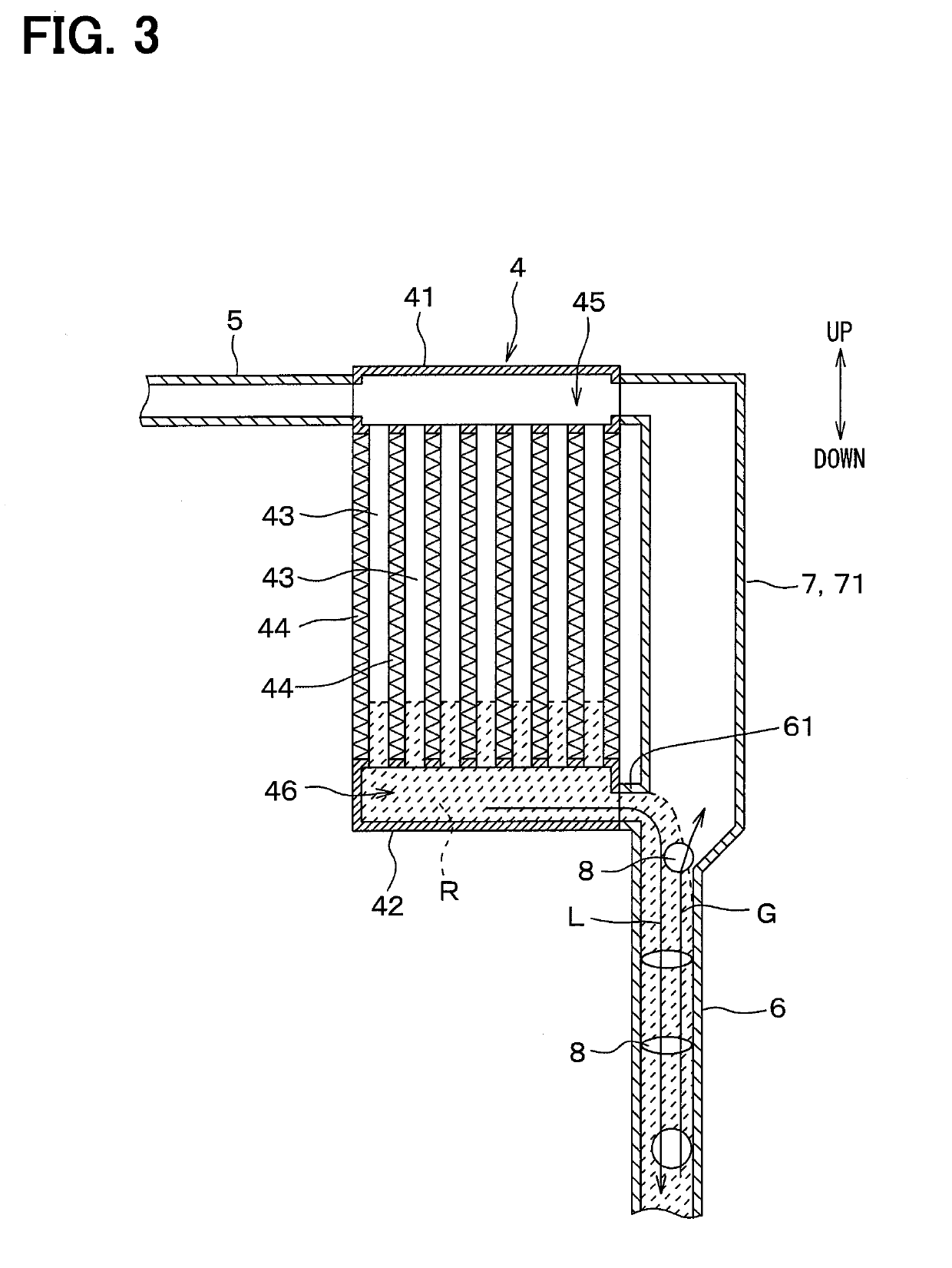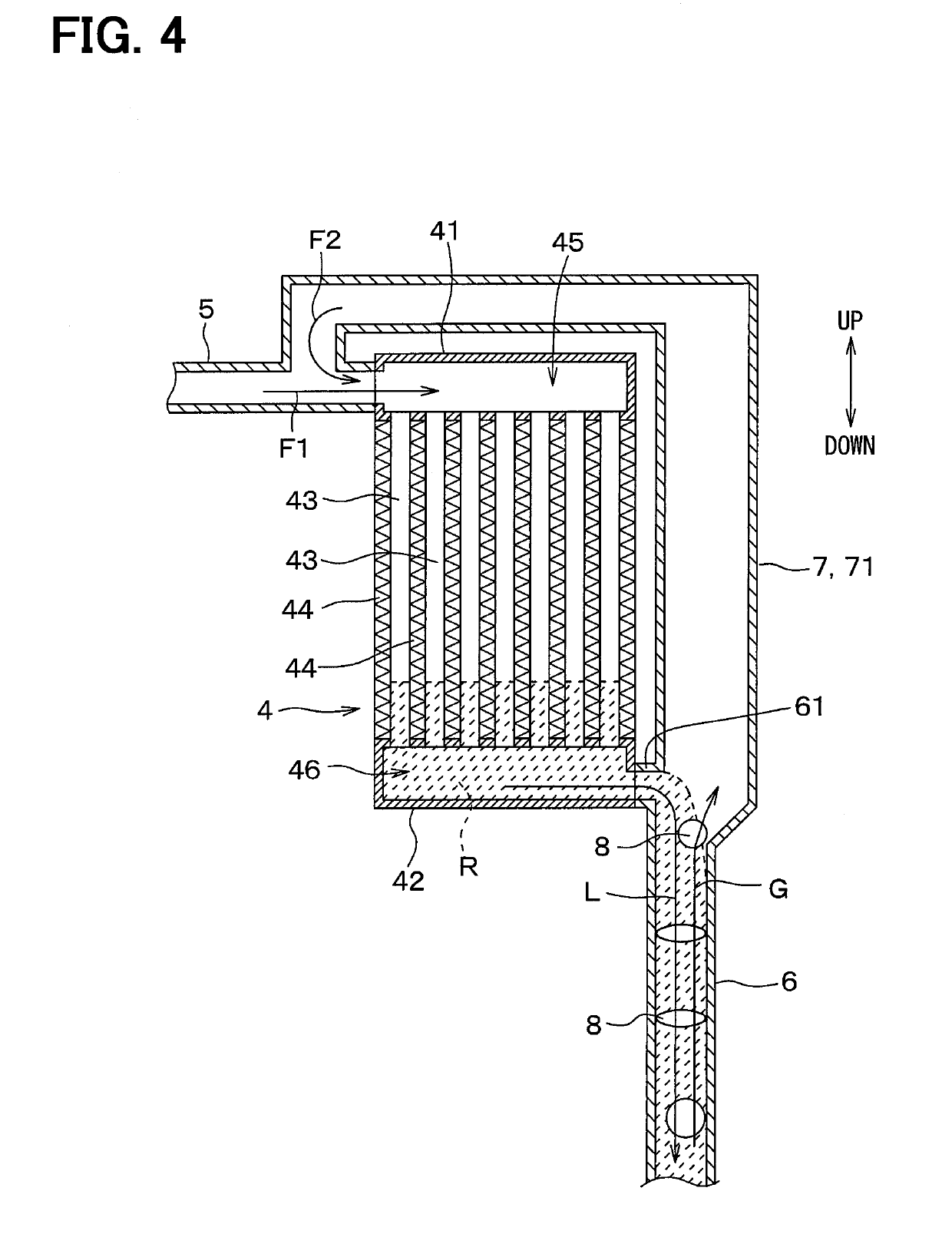Device temperature regulator
a technology of temperature regulator and device, which is applied in the direction of lighting and heating apparatus, cooling/ventilation/heating modification, batteries, etc., can solve the problems of abnormal noise and the inability to smoothly supply liquid-phase refrigerant from the condenser to the evaporator through the liquid-phase passage, so as to improve the cooling performance of the target device
- Summary
- Abstract
- Description
- Claims
- Application Information
AI Technical Summary
Benefits of technology
Problems solved by technology
Method used
Image
Examples
first embodiment
[0031]A first embodiment will be described below with reference to the accompanying drawings. A device temperature regulator of the present embodiment regulates the temperature of a target device, i.e., an electric device, such as an electrical storage device or an electronic circuit, mounted on electrically-driven vehicles, including electric vehicles and hybrid vehicles, by cooling the target device. In the drawings, arrows indicating up and down represent upward and downward directions of gravitational force when the device temperature regulator is mounted on a vehicle and the vehicle is stopped at a horizontal plane.
[0032]First, the target device to be temperature-regulated by a device temperature regulator 1 of the present embodiment will be described.
[0033]As shown in FIG. 1, the target device to be temperature-regulated by the device temperature regulator 1 of the present embodiment is an assembled battery 2 (hereinafter referred to as a “battery”). The target device may be a...
second embodiment
[0065]A second embodiment will be described below. The second embodiment is substantially the same as the first embodiment except that the configuration of the outer bypass passage 71 is changed with respect to that of the first embodiment, and thus only differences from the first embodiment will be described.
[0066]As shown in FIG. 4, in the second embodiment, the outer bypass passage 71 has one end connected to the liquid-phase passage 6 and the other end connected to the gas-phase passage 5. When the refrigerant boils in the evaporator 3 and is condensed in the condenser 4 due to a temperature difference between the evaporator 3 and the condenser 4, the flow of the gas-phase refrigerant directed from the evaporator 3 to the condenser 4 is generated in the gas-phase passage 5, as indicated by an arrow F1 in FIG. 4. Thus, the other end of the outer bypass passage 71 is connected to the gas-phase passage 5, so that the gas-phase refrigerant flowing through the outer bypass passage 71...
third embodiment
[0067]A third embodiment will be described below. The third embodiment is substantially the same as the first embodiment except that the configuration of the condenser 4 is changed with respect to that of the first embodiment, and thus only differences from the first embodiment will be described.
[0068]As shown in FIG. 5, in the third embodiment, the condenser 4 is configured of a sealed case, and does not include the upper tank, the lower tank, and the heat exchange tubes described in the first and second embodiments. A heat sink 47 configured of a plurality of plate-shaped members is provided on the upper outer side of the condenser 4. Each of the condenser 4 and the heat sink 47 is preferably made of a material having excellent thermal conductivity, such as aluminum or copper. The shape and size of each of the condenser 4 and the heat sink 47 can be arbitrarily set in accordance with a space on the vehicle where each of the condenser 4 and heat sink 47 is mounted.
[0069]The gas-pha...
PUM
| Property | Measurement | Unit |
|---|---|---|
| temperature | aaaaa | aaaaa |
| flow rate | aaaaa | aaaaa |
| inner diameter | aaaaa | aaaaa |
Abstract
Description
Claims
Application Information
 Login to View More
Login to View More - R&D
- Intellectual Property
- Life Sciences
- Materials
- Tech Scout
- Unparalleled Data Quality
- Higher Quality Content
- 60% Fewer Hallucinations
Browse by: Latest US Patents, China's latest patents, Technical Efficacy Thesaurus, Application Domain, Technology Topic, Popular Technical Reports.
© 2025 PatSnap. All rights reserved.Legal|Privacy policy|Modern Slavery Act Transparency Statement|Sitemap|About US| Contact US: help@patsnap.com



